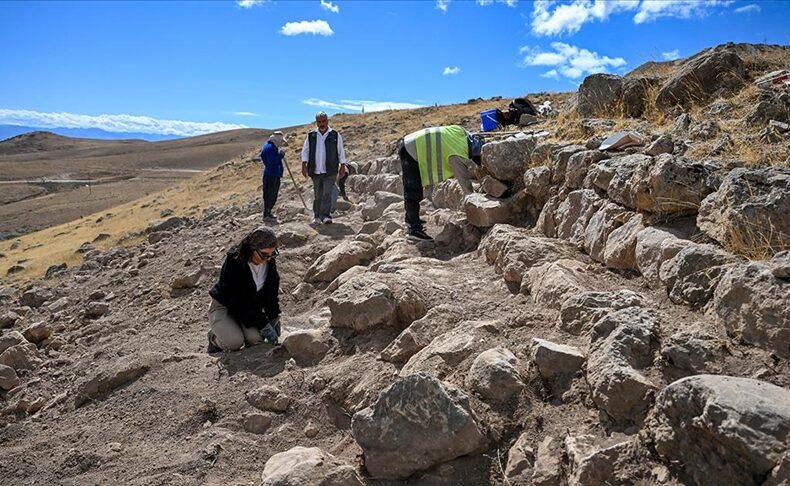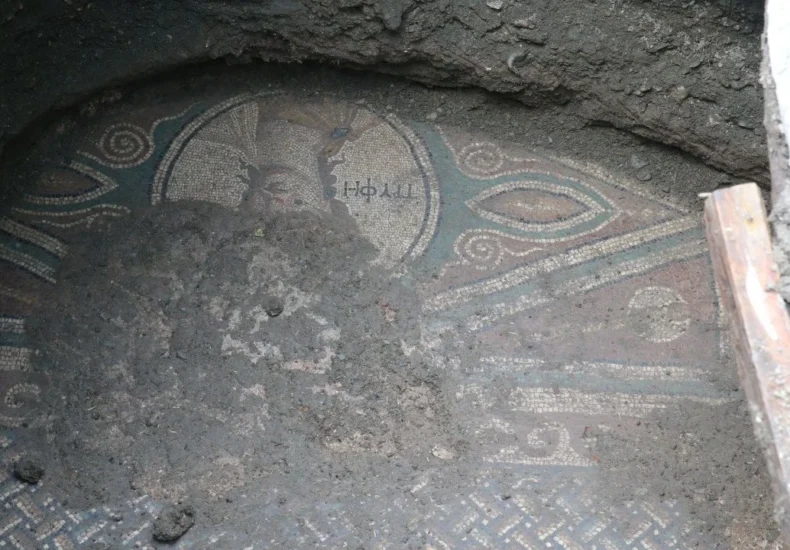
Was Öksüt Castle Once a Hittite Stronghold? Local Experts Reconsider the Origins of a Massive Rock-Cut Fortress in Central Anatolia
High on the southern slopes of Mount Erciyes, the vast rock-cut complex of Öksüt Castle dominates the landscape with a network of carved chambers, tunnels, cisterns, and multi-level passageways. Although long known to the local population, the fortress is once again drawing attention as scholars and heritage specialists revisit longstanding claims of a Hittite-era origin

A Newly Uncovered 1,500-Year-Old Roman Dwelling Sheds Light on Daily Life in Ancient Commagene’s City of Perre
The 2025 excavation season at Perre has revealed one of the most informative architectural discoveries yet: a 1,500-year-old domestic complex built during the late Roman occupation of the ancient Commagene region. The find delivers a rare, ground-level view of how households functioned in a city positioned at a vital crossroads of trade and military movement.

Six Aramaic Inscriptions Unearthed at Zernaki Tepe Reveal Forgotten Parthian Frontier in Eastern Türkiye
Archaeologists have uncovered six new Aramaic inscriptions at Zernaki Tepe, a 3,000-year-old ancient city in Van Province, eastern Türkiye. The discoveries — including three deliberately erased texts — illuminate a turbulent Parthian-era presence in Anatolia and the shifting power struggles between empires that once vied for control of the region. Located in the Yukarı Işıklı

Ongoing Excavations at Garibin Tepe Near Van Shed Light on Urartian Architecture and Conservation Efforts
Archaeological works continue at Garibin Tepe in Türkiye’s Van province, one of the most intriguing Urartian sites of recent years. Excavations this season have focused on documenting massive walls, lion statues, and wall paintings as researchers seek to understand the architectural layout and royal character of the ancient complex. Located about 30 kilometers from central

Evidence of 6,000-Year-Old Sacrificial Rituals Unearthed at Tadım Fortress Excavations in Elazığ
Archaeological excavations at Tadım Fortress and Mound in Elazığ, eastern Türkiye, have revealed striking evidence of religious practices dating back nearly 6,000 years. Conducted under the direction of the Elazığ Archaeology and Ethnography Museum, the investigations are shedding new light on both daily life and ritual traditions of the region’s prehistoric communities. This season, archaeologists

Archaeologists Discover Rare Hittite Cuneiform ‘Bird Omen Text’ at Samuha, an Important Cult Centre
A remarkable discovery has emerged from the ancient Hittite settlement of Samuha—modern-day Kayalıpınar, located in Türkiye’s Sivas province. Archaeologists have unearthed a rare cuneiform tablet containing what appears to be a bird omen text, shedding new light on the spiritual practices of the Hittites. The excavations are being led by Assoc. Prof. Dr. Çiğdem Maner

Traces of Assyrian Trade Colonies Emerging in Türkiye’s Yassı Höyük: Are Written Tablets on the Horizon?
Excavations at Yassı Höyük, located in the Afşin district of Kahramanmaraş, Turkey, are shedding light on layers potentially dating back to the Assyrian Trade Colonies Period. Excavation director Assoc. Prof. Dr. Elif Baştürk expressed growing excitement: “We’re wondering — are we getting close to written sources? Could we uncover tablets or other records?” Launched in

A First in Türkiye: Hands-On Bioarchaeology Workshop at Arslantepe Mound Begins
Arslantepe Mound, a UNESCO World Heritage Site located in the Battalgazi district of Malatya, is hosting Turkey’s first-ever hands-on bioarchaeology workshop. Running from July 11 to July 25, 2025, this scientific training program marks a milestone in archaeological education in the country. Led by Prof. Dr. Francesca Balossi Restelli from Sapienza University of Rome and

Illegal Excavation in Türkiye’s Tokat Uncovers Rare Roman Mosaic
An illegal excavation in the Zile district of Tokat province has led to the unexpected discovery of a colorful Roman-era mosaic, shedding new light on the region’s rich and ancient history. Archaeologists believe the intricately designed floor mosaic may have once adorned a public building during the Roman period. Tokat is known as one of

Tracing the Millennia-Long Journey of Obsidian from Bitlis to the Levant
A new archaeological project led by Bitlis Eren University (BEU) aims to uncover the ancient trade and cultural pathways that carried obsidian from the volcanic mountains of Bitlis, Türkiye, to the heart of the Middle East thousands of years ago. Obsidian, a naturally occurring volcanic glass, was a prized material in the Neolithic era, used
